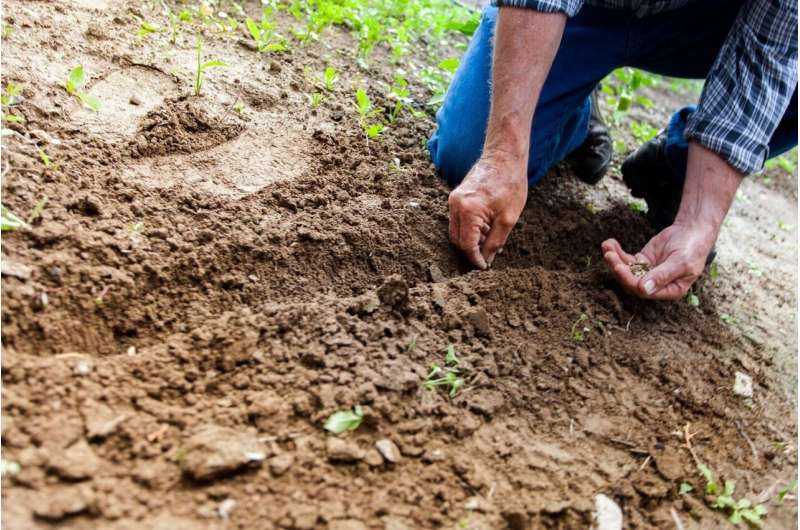How microplastics in the soil contribute to environmental pollution

Plastic, with its unabated global production, is a major and persistent contributor to environmental pollution. In fact, the accumulation of plastic debris in our environment is only expected to increase in the future. "Microplastics" (MP)—plastic debris <5 mm in size—are particularly problematic in this regard, owing to how easily they can be ingested by marine organisms and eventually find their way to humans. But, it is not just the marine environment that contains MP debris. Studies on agricultural soil have revealed that MPs adversely affect not only the soil quality but also the physiology of soil organisms and, in turn, the interaction between soil and plants. Still, because most studies on MPs have focused on marine environments, it is not clear how abundant MPs are in different types of soils based on the agricultural practice (a source of MP) employed. Moreover, it remains to be determined whether only external sources of MP (sewage, wastewater, and runoff water due to rain) are responsible for the soil pollution.
Scientists from Incheon National University, Korea, headed by Prof. Seung-Kyu Kim, now explore these questions in their latest study published in Journal of Hazardous Materials. "Most studies on MPs have focused on the marine environment, but substantial amounts of MPs can be generated in the agricultural environment via weathering and fragmentation of plastic products used in agricultural practices. We hoped to find out the amount of MPs in Korean agricultural soils and how they change according to different agricultural practices and environmental conditions," says Prof. Kim.
For their study, the scientists examined four soil types corresponding to different agricultural practices: soils from outside and inside a greenhouse (GS-out and GS-in, respectively), mulching (MS), and rice field soil (RS). Of these, the former three samples represented the use of polyethylene film, while the RS sample represented little to no use of plastic. To minimize the effect of non-agricultural sources of MP, scientists collected the samples from rural farmlands during the dry season. They only considered MPs in the size range of 0.1-5 and classified them as per their shapes: fragment (uneven), sheet (thin an even), spherule (round), and fiber (thread-like).
As expected, scientists found the highest average MP abundance in GS-in and GS-out (GS-in > GS-out), but surprisingly, they found the lowest MP content in MS rather than RS. Further, they found that among the different shapes of MPs, fragments dominated GS-in; fibers, GS-out and MS; and sheets, RS. Interestingly, all soils except GS-in had a major contribution from sheets, which hinted towards potential internal sources of fragment-type MPs within greenhouses.
Scientists also observed an interesting trend regarding MP size distribution in the soil samples. They found that, unlike GS-out, MS, and RS (which showed MP abundance only for a range of sizes), GS-in showed an increasing abundance for progressively smaller sizes. They attributed this to the absence of "environmental fate effect," causing the removal of MPs by surface-runoff, infiltration, and wind in the GS-in samples. Prof. Kim explains, "Contrary to previous studies which stress on MPs originating mostly from external sources, our study reveals that MPs in agricultural soil can come from external as well as internal sources, and that their concentration and sizes can be strongly affected by environmental conditions,"
These findings can contribute to an enhanced understanding of the role of agricultural environment as an MP source. Hopefully, assessing potential risks of MPs in agricultural soils and establishing efficient management strategies can help us to reduce the threat from MPs.
More information: Seung-Kyu Kim et al, Abundance and characteristics of microplastics in soils with different agricultural practices: Importance of sources with internal origin and environmental fate, Journal of Hazardous Materials (2020). DOI: 10.1016/j.jhazmat.2020.123997
Journal information: Journal of Hazardous Materials
Provided by Incheon National University



















